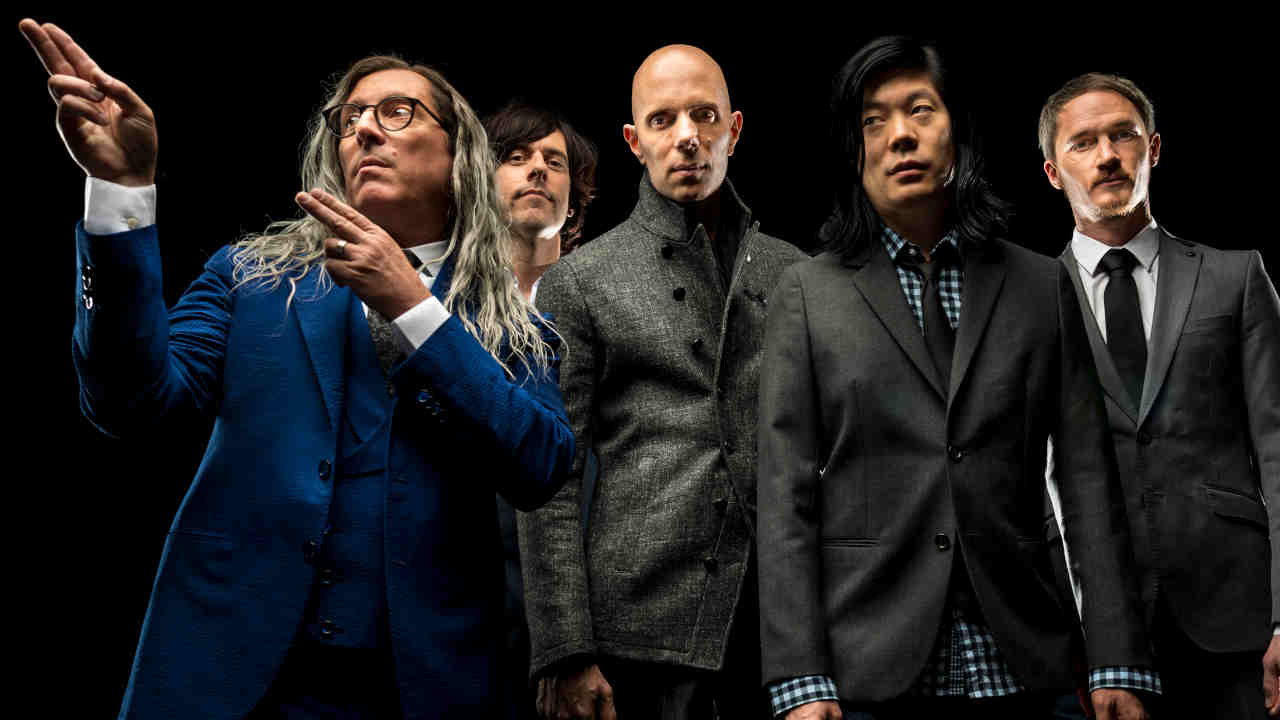Review: Two nights of Goblin Horror
Claudio Simonetti & Co provide a live soundtrack to two classic horror flicks

Over the last two nights at London's Union Chapel, Italian prog-horror legends Goblin recreated the soundtracks to two classic horror movies — George Romero's Dawn Of The Dead and Dario Argento's Suspiria — as they played on the big screen. We sent reporters to both shows. After washing the blood from their clothes, they filed their reports.
Monday: Dawn Of The Dead
There could hardly be a more appropriate backdrop to an evening of era-defining zombie-prog than the Victorian gothic of the Union Chapel in Islington. Following the performance here of composer Fabio Frizzi in 2013, it would appear the venue has become the mecca for Italian horror movie composers. Well, two of them anyway. Goblin founder Claudio Simonetti actively sought it out, admitting that it’s the most impressive venue in which he has played. In the Q&A before tonight’s show, Simonetti ventures whether the building, a working church, may have been deconsecrated. It’s an entirely valid hypothesis given the carnage soon unleashed within its walls: The tide of gore flows as thick as it ever did in George A Romero’s masterful horror movie, hereby given an extra crimson splash courtesy of Goblin’s unforgiving musical score, played live.
Dawn of the Dead (1978) is a movie that exists in multitudinous forms around the around, with the original US print implausibly bereft of much Goblin. It was Dario Argento’s improved Italian cut that removed some of the excess baggage and brought the music to the fore, cementing the audio-visual bond that existed between Argento and his favourite band via _Deep Red _(1975) and Suspiria (1977). Today the two are inextricably linked and (Claudio Simonetti’s) Goblin in particular is indebted to the association. A question from the audience with reference to Argento’s more recent movies, which barely hint at the maestro’s former glories, leads Simonetti to politely distance himself with a shrug and a glib if good humoured admonishment that he only provides the music.
The music in Dawn of the Dead is effectively a riff on the main theme, simple yet spiky and striking. It doesn’t distort or swallow the movie, which plays out like an extended metaphor for consumerism and media that is more profound now than it ever was. The advantage the dead have over the living, one character determines early on, is that the dead don’t think.
~ David Kerekes
Tuesday: Suspiria
The latest news, features and interviews direct to your inbox, from the global home of alternative music.
After the previous night, Claudio Simonetti should know what to expect – basically, a level of reverence so intense you could be forgiven for thinking the Union Chapel was constructed in his honour. Tonight, however, is reserved for what is clearly his proudest work and the amiable repeat of the Q&A session beforehand still reveals his humility at being able to perform it amongst the vaulting surroundings.
Where Goblin’s soundtrack for Dawn Of The Dead was very much shackled around the bursts of action, Suspiria is all about building tension, the primary colours of the main setting’s offering a gaudy template that’s perfect for a score that’s long been regarded as a prog masterpiece. The pealing signature tune itself, like Tubular Bells having passed through a distorted looking glass and into a ghostly netherworld, has been seared so deeply into brains of everyone here that when it opens the movie, it feels like a magical neural pathway being lit up on cue. That sense of creepy, far-from-Kansas guiding light proves to be the perfect movie book-end as the heroine Suzy Bannion zeroes in on the movie’s central mystery, but the clattering timpani, atonal screeches, ghostly whispers and the twanging, pulse of Sighs, as though all your neck veins a throbbing on panic alert – another repeated theme throughout the movie – move Goblin out into atmospheric, avant-garde territories that leaves nerves as shattered as panes of glass lacerating Suspiria’s various, ill-fated ballerinas.
For all the groove that runs through Goblin, tonight is all about the pull of the peripheral, and it’s mesmerising to witness it being played in real time. The only release is the full-on, groove and Moog-squelch jamboree of the end credits, a wild ride out that has a church-load of worshippers cheering ecstatically, as if a long-dormant itch has finally been exorcised.
~ Jonathan Selzer
